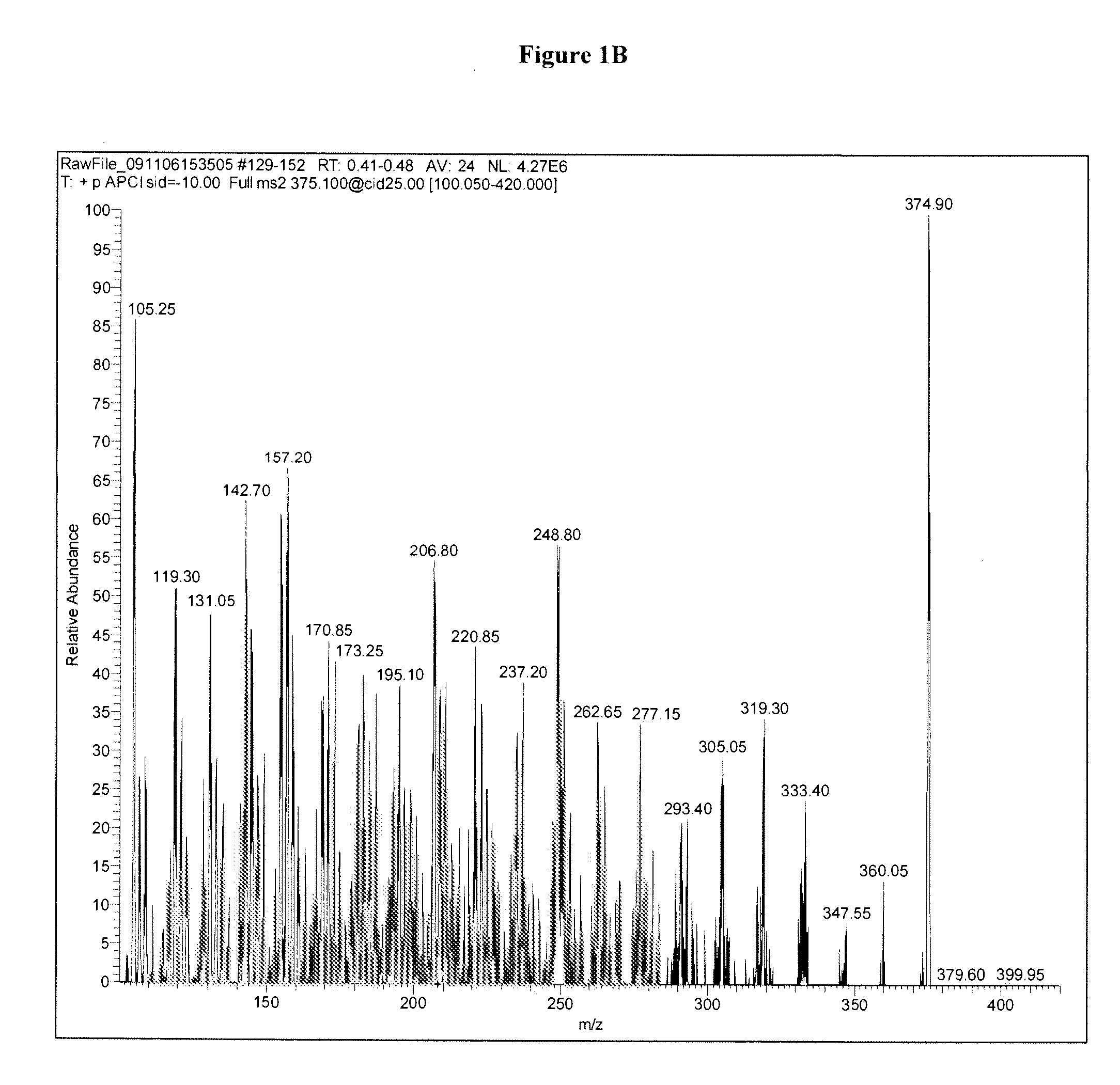Methods for detecting dihydroxyvitamin D metabolites by mass spectrometry
a technology of dihydroxyvitamin d and mass spectrometry, which is applied in the field of detection of dihydroxyvitamin d metabolites, can solve the problems that the source of any nutritional deficiency of vitamin d cannot be determined without, and achieve the effects of improving solvent removal, saving significant time and expense, and being less susceptible to dissociation
- Summary
- Abstract
- Description
- Claims
- Application Information
AI Technical Summary
Benefits of technology
Problems solved by technology
Method used
Image
Examples
example 1
Determination of 1α,25-Dihydroxyvitamin D3 and 1α,25-Dihydroxyvitamin D2 by LC-MS / MS
[0114]50 μl of an internal standard mixture (stripped serum spiked with 1α,25(OH)2D3-[6,19,19]-2H3 at 50 pg / 50 microliters and 1α,25(OH)2D2-[26,26,26,27,27,27]-2H6 at 200 pg / 50 microliters) was added to test tubes then 500 n1 of calibrator solution, quality control test solution, or serum standard, followed by the internal standard mixture. The solutions were delipidized by adding 50 μl MgCl2 / dextran sulfate solution and mixing thoroughly. The tubes were then centrifuged for 20 minutes and 500 μl of supernatant was transferred to ImmunoTube cartridges containing anti-dihydroxyvitamin D immunocapsules from ALPCO Diagnostics (Catalog Number K2113.SI). The cartridges were incubated on a shaker at room temperature for two hours. The beads were then washed three times with 750 μl deionized water. The beads were drained between washes by centrifuging the cartridges. Dihydroxyvitamin D bound to the beads wa...
example 2
Intra-Assay and Inter-Assay Precision
[0121]Stock solutions of 1α,25(OH)2D2 and 1α,25(OH)2D3 were added to pooled serum to produce a Low Pool (10-15 ng / mL of each metabolite), a Medium-Low Pool (25-35 ng / mL of each metabolite), Medium-High Pool (55-65 ng / mL of each metabolite) and a High Pool (115-130 ng / mL). Four aliquots from each of the Low, Medium-Low, Medium-High and High Pools were analyzed in a single assay using the LC-MS / MS protocols described in Example 1. The following precision values were determined:
[0122]
TABLE 2Intra-Assay Variation: 1α,25-Dihydroxyvitamin D2 (1α,25(OH)2D2)LowMedium-LowMedium-HighHigh112306814121526611253113563110411326796Average 12.430.663.7118.1(ng / mL)CV (%)16.2%11.8%5.3%16.5%
[0123]
TABLE 3Intra-AssayVariation: 1α,25-Dihydroxyvitamin D3 (1α,25(OH)2D3)LowMedium-LowMedium-HighHigh1103068125214335913831135561164153059118Average 12.332.160.6124.2(ng / mL)CV (%)17.8%8.1%8.6%8.2%
example 3
Enrichment of Vitamin D Metabolites in Preparation for LDTD-MS / MS
[0124]All samples analyzed in Examples 5 and 6, below, were prepared for LDTD-MS / MS according to the following procedure. All extractions were performed in a 96-well plate. 50 μL of serum or calibrant solution was added to each well, along with 200 μL of either methanol or ethyl acetate extraction / internal standard solution. Plates were vigorously mixed for about 2 minutes at 1600 RPM, and subsequently centrifuged for about 30 minutes at 6000 g.
[0125]An automated pipettor was used to transfer 150 μL of supernatant (from methanol extractions) or organic layer (from ethyl acetate extractions) to a new 96 well plate. Liquids were evaporated under a stream of nitrogen. The residue was reconstituted in 100 of methanol, and about 2 to 5 μL of the methanol solution was spotted onto a well of a LazWell plate.
PUM
| Property | Measurement | Unit |
|---|---|---|
| particle diameter | aaaaa | aaaaa |
| diameter | aaaaa | aaaaa |
| run time | aaaaa | aaaaa |
Abstract
Description
Claims
Application Information
 Login to View More
Login to View More - R&D
- Intellectual Property
- Life Sciences
- Materials
- Tech Scout
- Unparalleled Data Quality
- Higher Quality Content
- 60% Fewer Hallucinations
Browse by: Latest US Patents, China's latest patents, Technical Efficacy Thesaurus, Application Domain, Technology Topic, Popular Technical Reports.
© 2025 PatSnap. All rights reserved.Legal|Privacy policy|Modern Slavery Act Transparency Statement|Sitemap|About US| Contact US: help@patsnap.com



